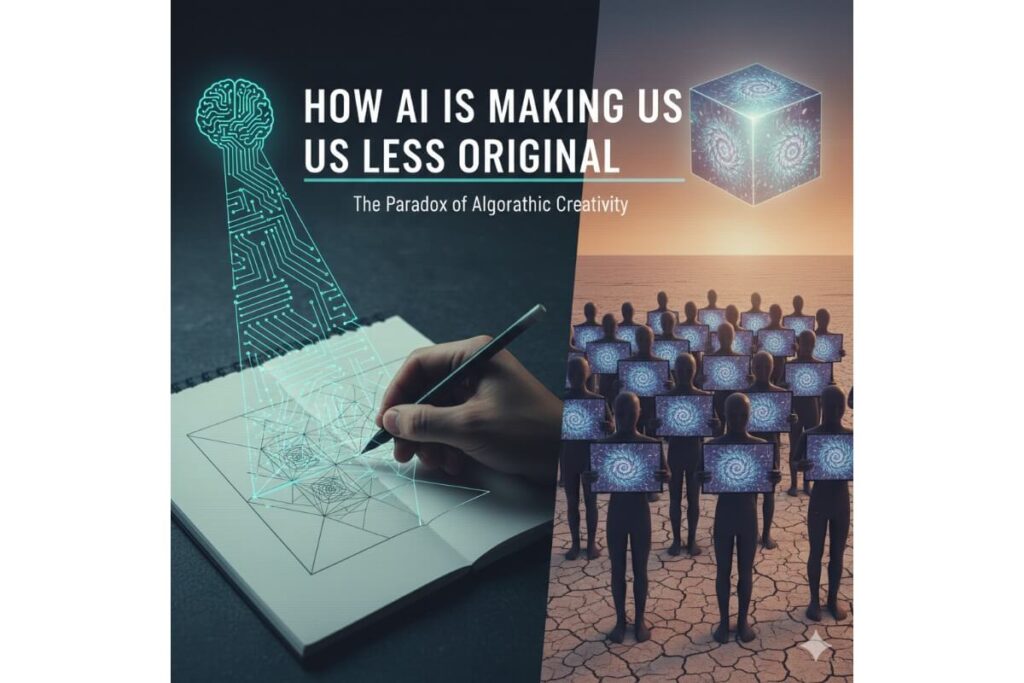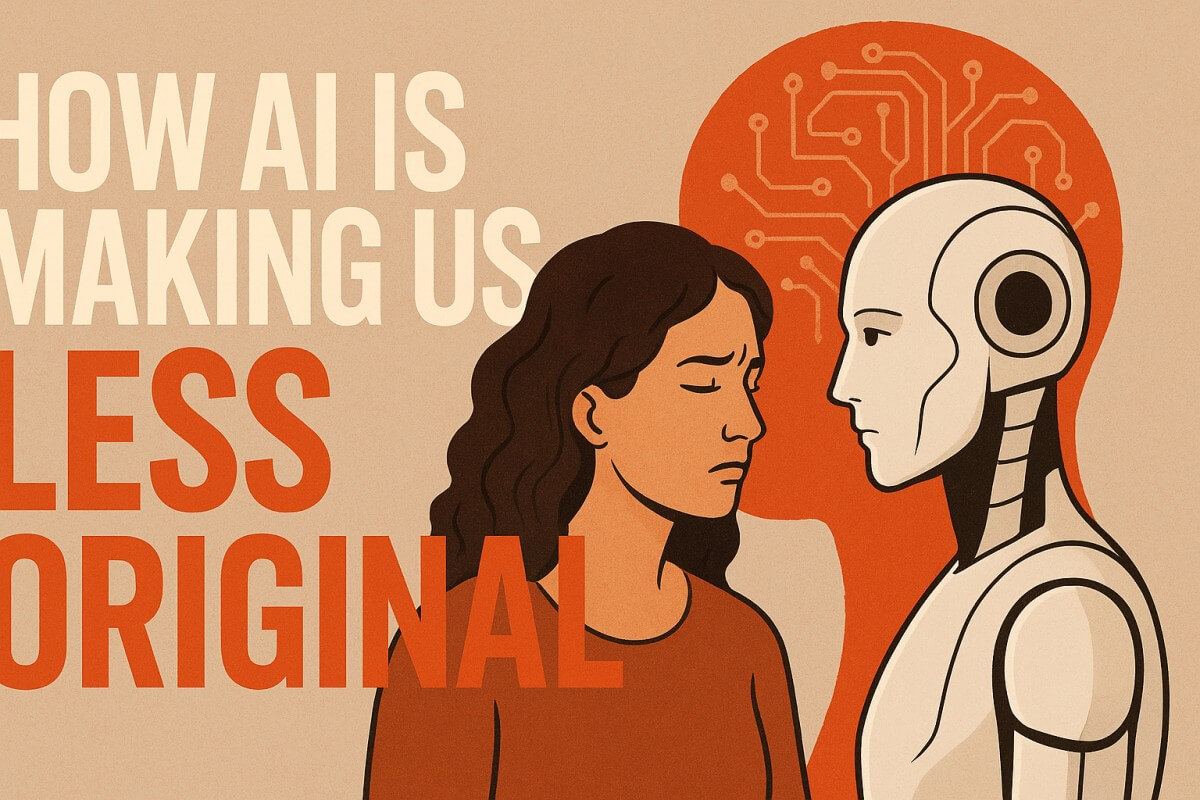Artificial Intelligence (AI) is transforming how we think, work, and create. From automated content generators to intelligent design tools, AI has made creativity faster and more efficient than ever before. But with convenience comes a cost — a subtle decline in human originality.
While AI can enhance productivity, it can also unintentionally limit creativity by replacing human thought with algorithmic patterns. This raises a crucial question: Is AI helping us create more — or simply making us less original?
1. The Rise of Artificial Creativity
AI tools are now capable of writing poems, designing logos, composing music, and even generating entire films. Platforms like ChatGPT, DALL·E, and Midjourney have democratized access to creative processes that once required years of skill development.
However, AI’s creativity is derivative, not intuitive. It learns from existing data — replicating styles, patterns, and trends already created by humans. This means that the more we rely on these systems, the more we recycle the past instead of inventing the future.
2. Automation vs Imagination
Human imagination thrives on curiosity, uncertainty, and experimentation. In contrast, AI operates on predictability and pattern recognition. When we depend too heavily on AI for ideas, our creative muscles weaken — much like how GPS navigation can make us forget how to read a map.
For instance, content creators who use AI writing tools for every project may notice a decline in originality and depth, as they start to mimic the tone and structure produced by machines. This automation convenience leads to uniformity — where every article, design, or post feels eerily similar.
3. The Echo Chamber of AI Training Data
AI tools generate results based on patterns in massive datasets — the same texts, images, and sounds available on the internet. This creates a creative echo chamber, where innovation loops around existing ideas instead of breaking boundaries.
The consequence? True originality gets diluted. The same aesthetic, tone, or format repeats across digital spaces — leading to what many call the “algorithmic sameness” effect.
Example: AI art tools may create stunning visuals, but often these designs are variations of existing styles, lacking emotional depth or personal storytelling — qualities only human artists can truly provide.

4. The Comfort Trap: When AI Becomes the Shortcut
One of the most significant risks of AI-assisted creativity is creative laziness. When a machine can instantly write, design, or compose, humans may feel less inclined to think deeply, brainstorm, or experiment. The result is a generation of creators who prioritize speed over substance.
AI’s instant solutions can also diminish the emotional connection between creators and their work. The process of trial and error — once the heart of creativity — is being replaced by one-click perfection.
5. Creativity Without Soul: The Missing Human Element
AI can analyze data, but it cannot feel emotion, empathy, or intuition — the core elements of authentic creativity. A poem written by AI might rhyme perfectly but lack emotional resonance. A digital illustration might look flawless, but it misses the spark of human expression.
This absence of human emotion means that while AI can replicate art, it cannot originate it. Creativity is not just about the final product — it’s about the journey of discovery, failure, and inspiration that no algorithm can replace.
6. How to Keep Your Creativity Alive in the AI Era
AI doesn’t have to be the enemy of creativity — but we must use it wisely. Here are a few ways to preserve your originality while embracing artificial intelligence:
- Use AI as a collaborator, not a replacement. Let it handle repetitive tasks while you focus on conceptual thinking.
- Inject personal experiences and emotions into your creative work — something AI can never imitate.
- Limit your dependency on AI tools for ideation. Try to brainstorm or sketch ideas manually before automating.
- Keep learning and experimenting. Challenge yourself to explore unconventional approaches beyond what AI suggests.
- Reflect on your creative process. Ask yourself: “Is this idea truly mine or shaped by a machine?”
7. The Future of Creativity: Finding Balance
The future isn’t about choosing between AI and human creativity — it’s about finding balance. AI can enhance innovation by saving time and providing insights, but it should remain a tool, not the creator.
As humans, our unique ability to dream, feel, and imagine beyond data defines true originality. If we lose that, even the most advanced AI systems won’t save our creativity — they’ll simply replicate it endlessly.
Conclusion: Reclaiming Human Imagination
Artificial intelligence is powerful — but so is the human mind. The challenge lies not in stopping AI, but in ensuring that technology amplifies creativity instead of replacing it.
True originality comes from curiosity, emotion, and imagination — qualities that no algorithm can replicate. So the next time you create something, remember: AI can assist you, but it’s your human touch that makes it truly original.

